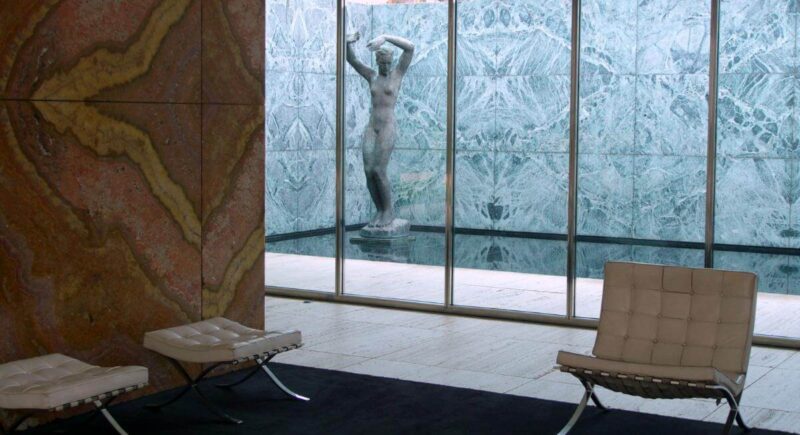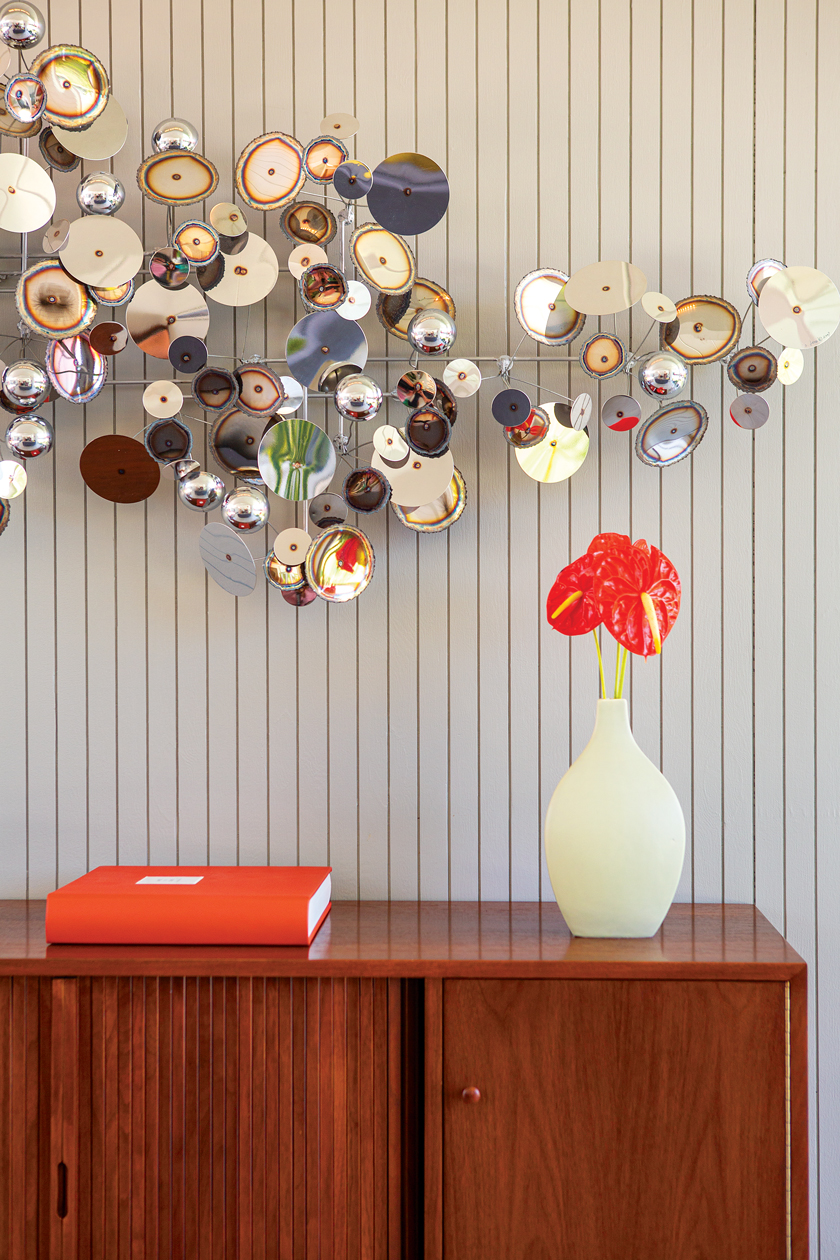If you enjoy the Bauhaus School and have an interest in German Mid Century Modern design, you probably are familiar with Lilly Reich. Most likely, you have seen her name in conjunction with that of her frequent partner in design, Ludwig Mies van der Rohe (born Maria Ludwig Michael Mies).
Although much of her fame and accomplishments are connected to Mies, her talent and influence stand on their own. Below, we tell you more about her life and works.
Exhibition Design and Work with the Deutscher Werkbund

Lilly Reich was born in Berlin in 1885. Originally, she trained in embroidery before making her way to Vienna in 1908, where she joined a visual arts production company called Wiener Werkstätte (the “Vienna Workshop”). She went back to Berlin two years later in 1911. Her early works included furniture, women’s clothing and textile products.
During this time, she became skilled in developing shop windows, which in turn got her into organizing exhibition installations.
A breakthrough in her career came in 1912, when she had the opportunity to join the Deutscher Werkbund (the “German Work Federation”). The goal of this organization was to help spread German design around the world.
Her contributions to the organization’s exhibits were so valued that she eventually became part of its governing board. This was quite a feat, considering that the same organization had claimed previously that women were “unequal to the demanding design tasks of architecture.”
Collaborations with Mies
In the 1920s, Reich got to know the Deutscher Werkbund’s vice president, architect and designer Mies. They would collaborate together throughout the rest of the ’20s and into the ’30s.

In 1929, countries around the globe sent their top representatives of industry, art and design to the Barcelona World Exposition. Reich and Mies worked together to design the famous Barcelona Pavilion, also called the “German Pavilion.” This simple, beautiful structure was designed as “an ideal zone of tranquillity,” as Mies described it. While other structures at the exposition were designed to house exhibits, it was the architecture itself that was on display at the German Pavilion.

Also on exhibit in the Barcelona Pavilion were the Barcelona Chair and Stool. Reich and Mies worked together to design these as well. The chair has since become one of the most iconic examples of Mid Century Modern furnishings in history, appearing in numerous films and TV shows over the years.

Reich became one of the Master designers and teachers at the Bauhaus school. Her role combined administrative responsibilities with teaching, and gave her the opportunity to influence up-and-coming designers.
During and After World War II
Alas, the Nazis shut down Bauhaus in 1933. For a time, both Mies and Reich remained in Germany. Reich even participated in the 1937 Paris World’s Fair. Mies got out of Germany in 1938, taking his career to the US. Reich, however, stayed behind, where she continued her design work.
This came to an abrupt and violent end in 1943, when a bomb struck her studio. She would spend the next two years in a camp where she was forced to perform hard labor. She would only survive another two years after her release, with her health swiftly declining. She was just 62 years old when she died on December 14, 1947.
Posthumous Recognition
Reich was a leading designer and architect in her time, yet her contributions went largely unrecognized by the broader public until after her death. It wasn’t until a 1996 MoMA exhibition that many people learned her name and contributions, and just how big a role she had in shaping Bauhaus design.
If you enjoyed this post, you may also like The Under-Recognized Brilliance of Aino Aalto and Modern(ist) Women: Florence Knoll. And of course, don’t forget to follow us on Instagram, Facebook, Pinterest and YouTube for more Atomic Ranch articles, house tours, and ideas!












